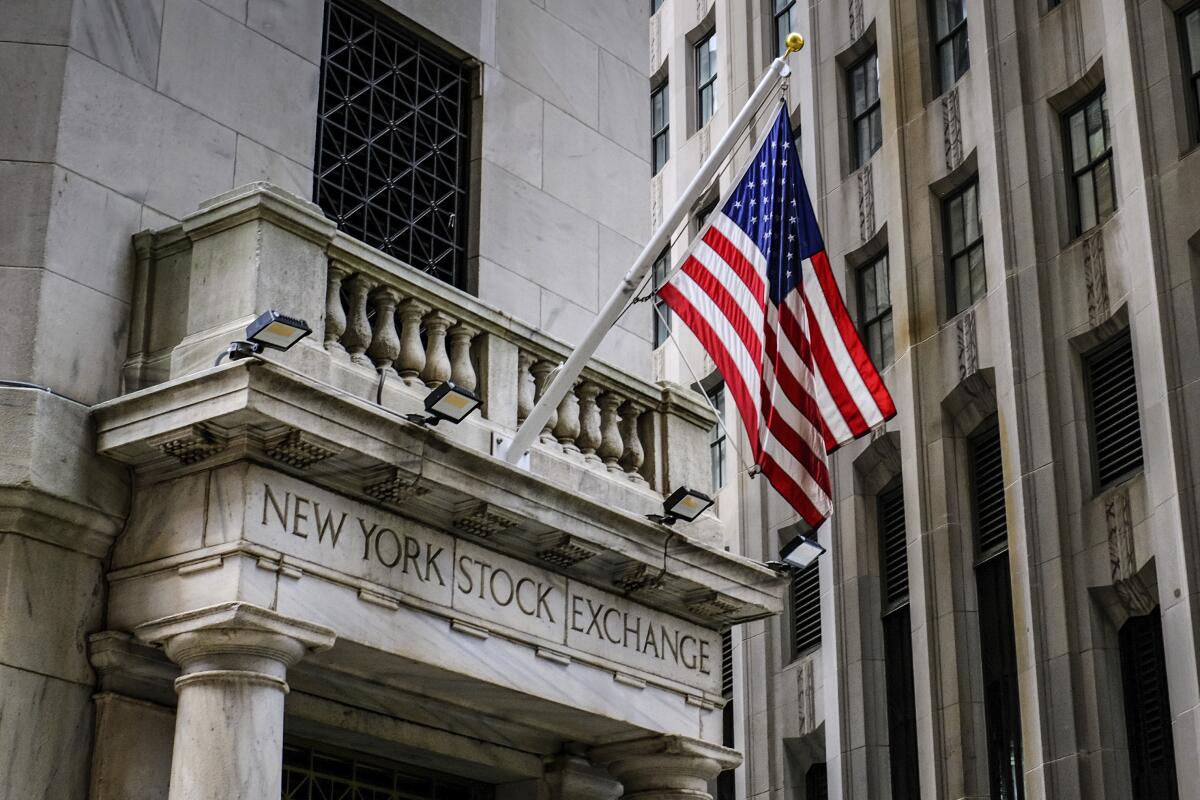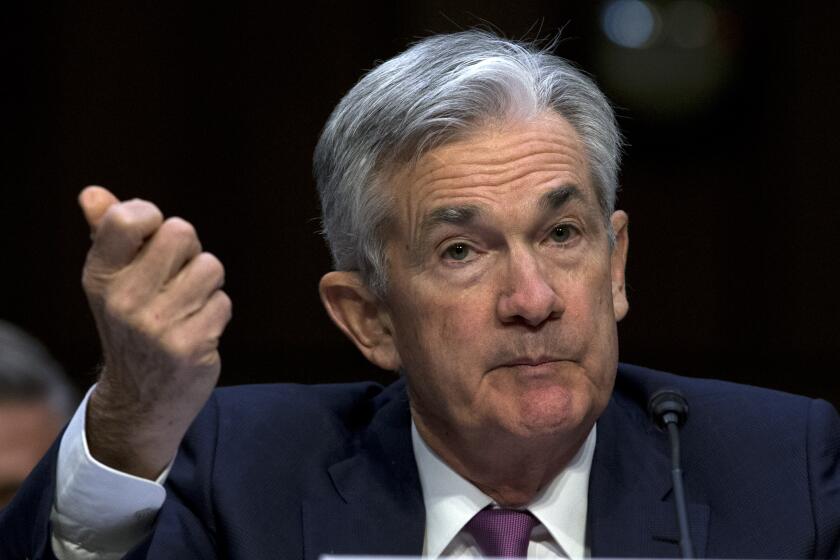Wall Street rises after getting some relief from the bond market and oil prices

- Share via
Wall Street rose Wednesday after getting some relief from relaxing bond yields and falling oil prices.
The Standard & Poor’s 500 index climbed 0.8% to claw back more than half of its sharp tumble from a day earlier, which sent it to a four-month low. The Dow Jones industrial average rose 0.4%, a day after erasing the last of its gains for the year. The Nasdaq composite led the market with a gain of 1.4%.
Stocks have struggled since the summer under the weight of soaring Treasury yields in the bond market, which have touched their highest levels in more than a decade. High yields undercut stock prices by pulling investment dollars away from stocks and into bonds. They also crimp corporate profits by making borrowing more expensive.
The yield on the 10-year Treasury, which is the centerpiece of the bond market, pulled back from its highest level since 2007, to 4.73% from 4.80% late Tuesday. Shorter- and longer-term yields also eased a bit to offer more oxygen to the stock market.
Yields fell following a couple mixed reports indicating a slowing economy. The first indicated hiring by employers outside the government was weaker last month than expected.
Even Federal Reserve economists know that wages had no effect on inflation. But that doesn’t stop Fed Chair Jerome H. Powell from harping on labor costs and ignoring the real culprits.
On Wall Street, that’s currently good news because a cooling job market could mean less upward pressure on inflation. That in turn could convince the Federal Reserve to take it easier on interest rates.
After already hiking its main interest rate to the highest level since 2001, the Fed has indicated it may keep rates higher next year than it had earlier expected. Treasury yields have correspondingly snapped higher as traders accept a new normal for markets of high rates for longer.
The Fed is paying particular attention to the job market because too much strength there could drive wages for workers much higher, which it fears could keep inflation well above its target of 2%.
Wednesday’s report from ADP suggested private employers added 89,000 jobs last month, a much sharper slowdown in hiring than the 140,000 that economists expected.
The report doesn’t have a perfect track record of predicting what the more comprehensive jobs report from the U.S. government says. That will arrive Friday.
The Federal Reserve left its key interest rate unchanged for the second time in its last three meetings, a sign that it’s moderating its fight against inflation.
But “if Friday’s report also shows the labor market is cooling, stock investors may worry a little less about indefinitely higher interest rates,” said Mike Loewengart, head of model portfolio construction at Morgan Stanley Global Investment Office.
A second report on the economy said that growth for businesses in the U.S. services industry slowed in September by a touch more than economists expected.
It also offered some hints of sticky pressure on inflation, with prices paid by services companies rising last month at a rate similar to that in August.
Oil prices tumbled Wednesday to take some heat off inflation. Benchmark U.S. crude fell $5.01 to settle at $84.22 per barrel, for its worst drop in just over a year. It’s been pulling back since topping $93 last week. Brent crude, the international standard, lost $5.11 to $85.81.
Prices for crude have been generally rising from $70 during the summer after announcements of cuts to production by some oil-producing countries.
The ousted speaker had relied on his skills of working with factions and placating the GOP’s radical flank. But ‘his strengths ended up undoing him.’
Wall Street is also absorbing the ouster of Kevin McCarthy as the speaker of the House of Representatives. The unprecedented move to remove a speaker from the position probably doesn’t change much in the short term, with funding for the U.S. government set until Nov. 17.
“That said, a leadership vacuum in the House raises the odds of a government shutdown when the current funding extension expires,” according to economists at Goldman Sachs.
A shutdown would drag on the U.S. economy, raising the risk of a recession, though financial markets have held up relatively well through previous shutdowns.
On Wall Street, Big Tech stocks were helping to support the market after leading it lower a day earlier. They tend to move more sharply with expectations for rates because high-growth stocks are seen as some of the biggest victims of high yields.
A 5.9% jump for Tesla and 1.8% rise for Microsoft were the two strongest forces pushing upward on the S&P 500. Alphabet rose 2.1%.
On the losing end of Wall Street were big oil-and-gas companies, which fell with the price of crude. Exxon Mobil dropped 3.7%, Chevron lost 2.3% and ConocoPhillips slid 3.6%.
Cal-Maine tumbled 7.3% after the egg producer reported a sharp drop in profit for its latest quarter from a year earlier. The company said egg prices have returned “to more normalized levels” from their record highs as the industry recovers from the most recent outbreak of highly pathogenic avian influenza.
All told, the S&P 500 rose 34.30 points to 4,263.75. The Dow added 127.17 to 33,129.55, and the Nasdaq jumped 176.54 to 13,236.01.
In markets abroad, stock indexes were mixed across much of Europe.
Asian stocks tumbled more, coming off the prior day’s sharp losses from Wall Street. Tokyo’s Nikkei 225 index sank 2.3%, South Korea’s Kospi dropped 2.4% and Hong Kong’s Hang Seng slipped 0.8%.
AP writers Matt Ott and Elaine Kurtenbach contributed to this report.
More to Read
Inside the business of entertainment
The Wide Shot brings you news, analysis and insights on everything from streaming wars to production — and what it all means for the future.
You may occasionally receive promotional content from the Los Angeles Times.













